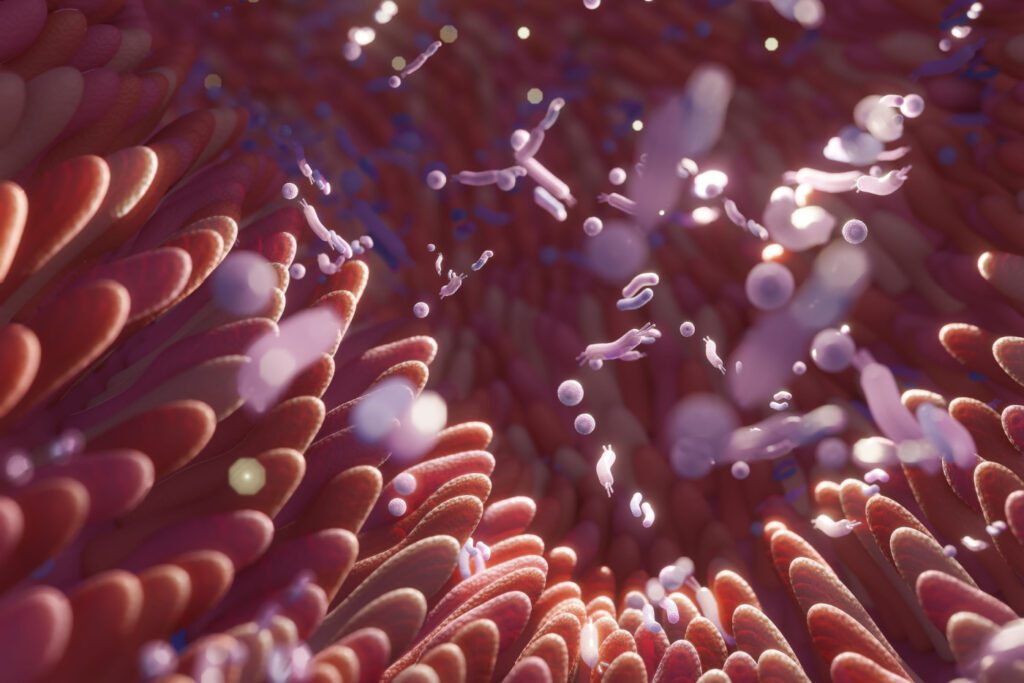
If you care for a horse, you are likely aware that they are fundamentally different from humans, or even our other domesticated animals. This includes unique digestive anatomy. Horses are monogastric, meaning that they have a single compartment stomach; however, they are also classified as hindgut fermenters. The hindgut of the horse accounts for 60% of their digestive tract.
Investing the time into understanding the complexities of the equine gastrointestinal (GI) tract can assist horse owners in making more educated and effective management decisions. The goal is to provide the horse with all the nutrients that they require, while reducing the likelihood of any digestive complications.
Review of the Anatomy
If we divide the equine GI tract into two broad categories, there is the foregut and the hindgut. The foregut includes the stomach and small intestine, and the hindgut is the cecum, large colon, and small colon.
The cecum is large (about 4 feet long). This is where most of the fermentation takes place. In the hindgut of the horse there are billions of various protozoa, bacteria, and fungi – commonly referred to as microbes. The passage of feed through the hindgut of the horse is slow. In the cecum, the digesta can remain there for up to 7 hours! This slow passage time is critical to the microbial fermentation as it allows the microbes time to digest the feed.
The image below shows the components of the foregut and the hindgut. In this diagram it is evident that the hindgut comprises the majority of the digestive tract.

Image retrieved from: https://cennutrition.com.au/wp-content/uploads/2021/03/CEN-Product-images-Benefits.jpeg
The Microbes
The microbes in the hindgut of the horse have a symbiotic relationship with the horse – where both the horse and the microbes benefit from the relationship. The horse relies on these microbes to be able to effectively digest the fibrous feedstuffs that comprise most of their diet.
When grains and concentrates are fed, they are primarily digested in the foregut by digestive enzymes. However, the hindgut does not produce digestive enzymes, and the plant cell wall portions (e.g., cellulose and hemicellulose) are not digested by enzymes. Therefore, to support a plant-based fibre rich diet, the microbial fermentation is imperative.
Products
Through the fermentation process, there are a few different compounds produced. They include volatile fatty acids (VFAs), amnio acids, lactic acid, B-vitamins, methane, carbon dioxide, water, and heat. This is why when the temperatures are frigid it is recommended to feed horses more hay! The volatile fatty acids are used by the horse as an energy source, in fact, they provide the horse with most of their energy!
To optimally support the hindgut of the horse, and ensure that the microbial population is stable, a consistent forage-based diet is crucial. When disturbances occur, even minor ones, it can quickly progress to serious health problems.
Hindgut Acidosis
Hindgut acidosis is a common issue. This occurs when the environment of the hindgut becomes overly acidic. Typically, this is due to an over production of lactic acid caused by too much starch reaching the hindgut.
When there is a change in pH creating a more acidic environment some of the beneficial microbes that are integral to fibre digestion will die-off. This gastrointestinal upset can lead to issues such as colic, a poor appetite, mood changes, onset of stereotypical behaviours etc.
Management
To optimally support your horse’s digestive system and hindgut, there are a few key principles:
The hindgut environment is fascinating and understanding how it works can help us to manage our horses in a way that is supportive of their digestive anatomy.
By: Madeline Boast, MSc. Equine Nutrition
References:
Cipriano-Salazar, M., Adegbeye, M. J., Elghandour, M. M., Barbabosa-Pilego, A., Mellado, M., Hassan, A., & Salem, A. Z. (2019). The dietary components and feeding management as options to offset digestive disturbances in horses. Journal of equine veterinary science, 74, 103-110.
Dicks, L. M. T., Botha, M., Dicks, E., & Botes, M. (2014). The equine gastro-intestinal tract: an overview of the microbiota, disease and treatment. Livestock science, 160, 69-81.
Willard, J. G., Willard, J. C., Wolfram, S. A., & Baker, J. P. (1977). Effect of diet on cecal pH and feeding behavior of horses. Journal of animal science, 45(1), 87-93.
Copyright © 2024 Balanced Bay Nutrition | Site Crafted by Bay Mare Design